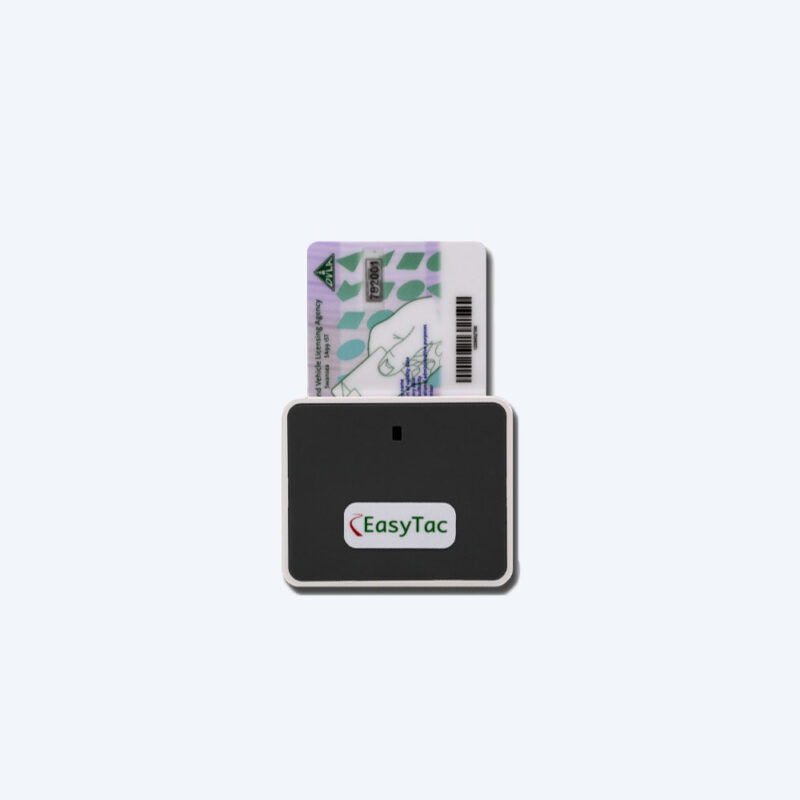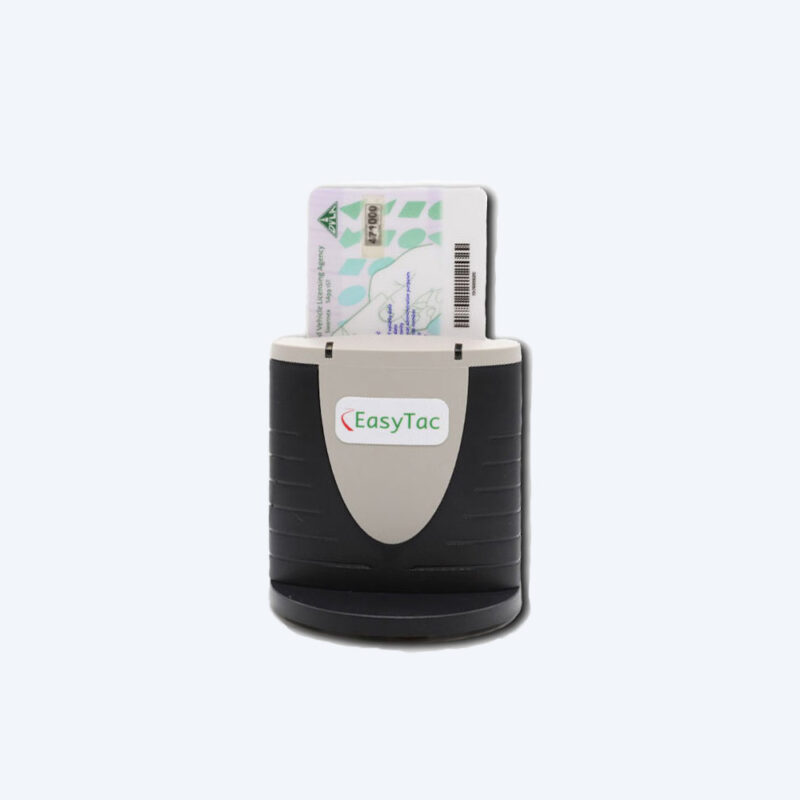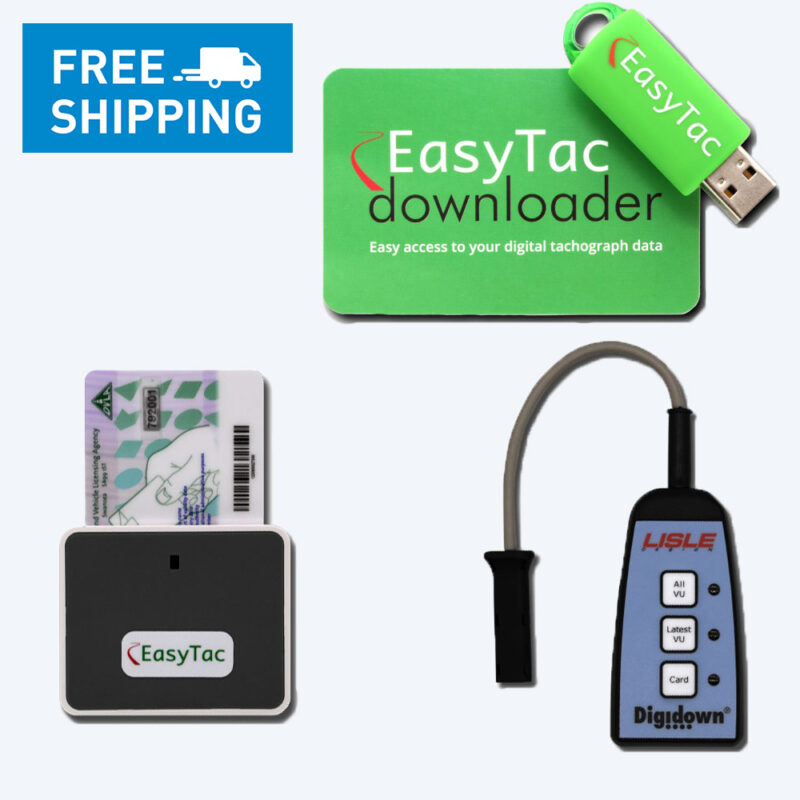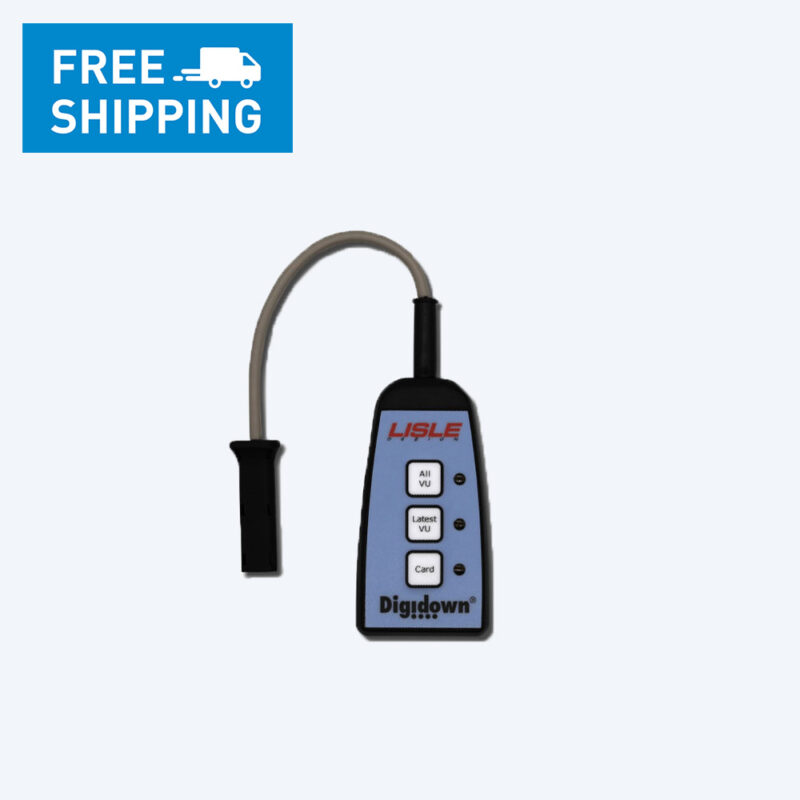Why do I need digital tachograph download software?
Digital tachographs
Tachographs are fitted to commercial goods and passenger vehicles in order to record speed, distance and driver activities, so that various legal restrictions on drivers and owners can be enforced.
Digital tachographs have been fitted to new vehicles across Europe, and beyond, for many years – phasing out the use of old analogue tachographs.
Digital tachograph smartcards
The European digital tachograph scheme uses smartcards to record individual driver activity data. These cards are personal to the driver, and are issued by the local country’s licensing authority. The digital tachograph equipment installed in the vehicle is known as the vehicle unit (VU) and the driver inserts their card into the VU at the start of their working day or shift. While working, the driver can indicate the type of activity they are undertaking – such as driving, resting or other work (such as loading/unloading.) The vehicle unit measures various parameters such as speed, distance and time, and records all of this data internally, but it also records similar information on the driver’s card. Thus each driver carries around a record of their personal activity, in their smartcard, while each vehicle also carries around a record of the vehicle’s movements, irrespective of whether it was driven by one or many drivers.
The European scheme also provides for other types of smartcard that are used for administrative purposes. For instance, a ‘company card’ is used to control access to the data stored in the vehicle unit, and a ‘workshop card’ is used for tachograph calibration.
Downloading, viewing and analysing data
There are various ways in which digital tachograph data can be viewed and analysed.
Activity reports – for a start, activity reports can be printed directly by the vehicle unit, on ‘tally roll’ paper. Although very limited, this is useful as a ‘last resort’, for instance if a driver has forgotten their driver’s smartcard.
Otherwise, extra hardware is required to read data from either the vehicle unit or the driver’s card:
A VU download device – this device plugs into the vehicle unit and transfers the stored vehicle data, usually into some form of ‘memory stick’ so that it can be copied onto a PC. Each vehicle unit has sufficient internal memory to store up to a year’s worth of tachograph information, so the download process does not have to be done very often.
A smartcard reader – this device typically plugs into a PC and provides a slot into which drivers’ cards can be inserted. Unlike memory sticks, smartcards need specific software to enable transferring of data, and in the case of digital tachographs there are very specific standards and requirements on how the data should be downloaded and stored. Indeed, the file format for the data is standardised by a European Union regulation, so that files downloaded from drivers’ cards are guaranteed to be compatible, irrespective of the software used to download or analyse them.
It should be noted that these standard files are not ‘human readable’ as they contain the activity data in a special, tamper-proof, electronic format.
Typically, a vehicle operator will wish to either view and analyse their drivers’ activity data themselves, to ensure that they are complying with various laws such as the Working Time Directive and Driver Hours law, or they will use an outside company or bureau to do this for them. Smaller operators, including owner-drivers, are still required to abide by various regulations, not least the requirement to store their downloaded smartcard data for a minimum period.




